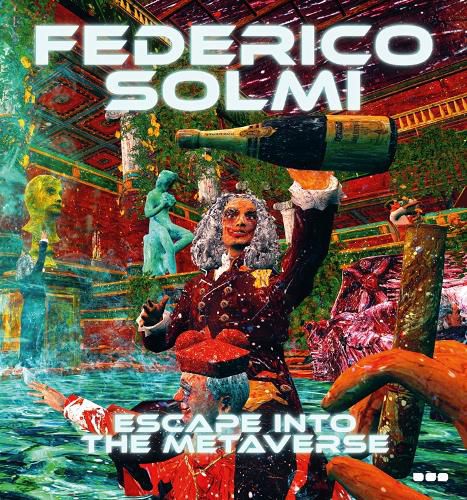Federico Solmi: Escape Into The Metaverse

Federico Solmi: Escape Into The Metaverse
Federico Solmi: Escape Into The Metaverse examines the work of Federico Solmi, a leading practitioner in the genre of new media art. As a narrative and figurative artist, Solmi utilises lurid colours and satire to portray a dystopian vision of contemporary society, highlighting the contradictions and fallibilities that characterise our time. Employing video, painting, drawing, sculpture, sound and digital game design, he creates a carnivalesque virtual reality with historical and present-day world leaders - animated by computer script and motion capture performance - in a critique of Western society’s obsession with power. Inspired by real events and fabricated myths, Solmi explores, re-interprets and concocts celebrated moments in history. As reconfigured narratives, these social and political commentaries disrupt the mythologies that underpin Western society, revealing its ties to nationalism, colonialism, religion and consumerism.
The book documents Solmi’s unique process of melding traditional art practices and digital technologies in a case study of his most ambitious video-painting to date, The Bathhouse (2020). Pioneering new modes of cultural production and art experience afforded by the metaverse, Solmi’s absurd rewriting of past and present merge dark humor and a sense of the grotesque in a virtual world that indicts our own reality.
Solmi was born in 1973 to a working-class family in Bologna, Italy. He is self-trained and self-educated. In 1999, he moved to Brooklyn, New York, to pursue his career. His perspective reflects his outlook as a cultural voyeur, questioning the nationalistic and revisionist American mythologies that are often presented as fact. In 2003, Solmi began to experiment with the tools of video game design, fascinated by the parallel universe made possible by 3D graphics, which he saw as a structure to create narrative video sequences using drawings and paintings. Every visual texture is painted and scanned on the computer up to three times to achieve the intentional flickering effect. The art of Paolo Uccello, Giorgio Morandi and Giorgio di Chirico serve as references for his visual compositions, while the writings of Howard Zinn, Noam Chomsky and Oriana Fallaci serve as inspiration for his social and political commentary.
This item is not currently in-stock. It can be ordered online and is expected to ship in approx 2 weeks
Our stock data is updated periodically, and availability may change throughout the day for in-demand items. Please call the relevant shop for the most current stock information. Prices are subject to change without notice.
Sign in or become a Readings Member to add this title to a wishlist.

